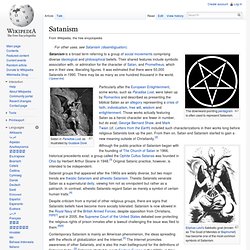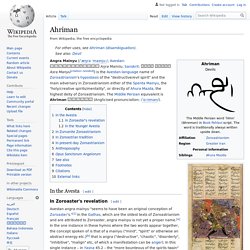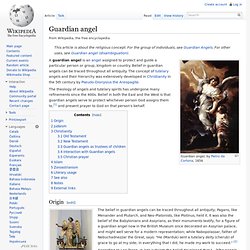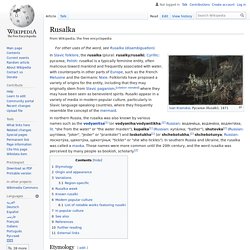

How To Create a Wiccan Book of Shadows (Complete Step-by-Step Guide) As an Amazon Associate I earn from qualifying purchases.

Spells, holidays, deities, correspondences—there’s a lot of information to juggle when it comes to Wicca. How’s a witch supposed to keep track of it all? Black Mass. Satanic religious practice The Guibourg Mass by Henry de Malvost, from the book Le Satanisme et la magie by Jules Bois, Paris, 1903 A Black Mass is a ceremony typically celebrated by various satanic groups.

It has allegedly existed for centuries in different forms and is directly based on a Catholic Mass.[1] However, a Black Mass takes the Catholic Mass and inverts it, intentionally mocking the Catholic celebration. This Is How Satanism Was Invented In The 1960s. Culture | August 21, 2019 Left: Anton LaVey on the cover of Look magazine, August 24, 1971.

Right: Jayne Mansfield and LaVey from the cover of 'California Infernal,' a book about their relationship. Sources: beatchapter.com; Walter Fischer. Satanism. The downward-pointing pentagram is often used to represent Satanism.

Satanism is a broad term referring to a group of social movements comprising diverse ideological and philosophical beliefs. Their shared features include symbolic association with, or admiration for the character of Satan, and Prometheus, which are in their view, liberating figures. Ahriman. Personification of the "destructive spirit" in Zoroastrianism In the Avesta[edit] In Zoroaster's revelation[edit]

Guardian angel. A guardian angel is an angel assigned to protect and guide a particular person or group, kingdom or country.

Belief in guardian angels can be traced throughout all antiquity. The concept of tutelary angels and their hierarchy was extensively developed in Christianity in the 5th century by Pseudo-Dionysius the Areopagite. The theology of angels and tutelary spirits has undergone many refinements since the 400s. Belief in both the East and the West is that guardian angels serve to protect whichever person God assigns them to,[1] and present prayer to God on that person's behalf.
Origin[edit] Dryad at DuckDuckGo. Viy. Rusalka. Character in Slavic folklore Etymology[edit] Origin and appearance[edit] According to Vladimir Propp, the original "rusalka" was an appellation used by pagan Slavic peoples, who linked them with fertility and did not consider rusalki evil before the 19th century.

They came out of the water in the spring to transfer life-giving moisture to the fields and thus helped nurture the crops.[9][10] Lot's Daughters: Midrash and Aggadah. According to the Rabbis, Lot had four daughters, two of whom were married, and two betrothed.

The two married daughters and their husbands, along with the two future bridegrooms, remained in Sodom and perished, leaving Lot with only two daughters after the destruction of the city (Gen. Rabbah 50:9; Pirkei de-Rabbi Eliezer, ed. Higger chap. 25). In their depiction of the impregnation of Lot’s daughters by their father, the Rabbis draw a distinction between the father and his daughters.
Series I - Chapter 22 - 'The Self' IN THE OPPOSITE seat sat a man of position and authority.

He was well aware of this, for his looks, his gestures, his attitude proclaimed his importance. He was very high up in the Government, and the people about him were very obsequious. He was saying in a loud voice to somebody that it was outrageous to disturb him about some minor official task. He was rumbling about the doings of his workers, and the listeners looked nervous and apprehensive. These 7 brutal truths from Krishnamurti reveal exactly what’s wrong with the world today. Most of you will agree: our society is far from perfect.

We’ve made undeniable progress. Yet we still struggle with the same problems that have plagued humanity for centuries. Arianism. Christological doctrine, attributed to Arius The term Arian is derived from the name Arius; it was not what the followers of Arius's teachings called themselves, but rather a term used by outsiders.[6] The nature of Arius's teachings and his supporters were opposed to the theological doctrines held by Homoousian Christians, regarding the nature of the Trinity and the nature of Christ. Origin[edit] Shri Yantra. Form of mystical diagram used in the Shri Vidya school of Hinduism Appearance[edit] In the 2009 issue of Brahmavidya (the journal of the Adyar Library), Subhash Kak argues that the description of Shri Yantra is identical to the yantra described in the shrisukta in veda.[2] Gallery[edit] Shri Yantra in various forms The Lalita Sahasranama in diagrammatic form, showing how its nine interlocking triangles form a total of 43 smaller triangles.
Mount Meru. Sacred mountain of Buddhist, Jain, and Hindu cosmology Mount Meru (Sanskrit/Pali: मेरु), also recognized as Sumeru, Sineru or Mahāmeru, is the sacred five-peaked mountain of Hindu, Jain, and Buddhist cosmology and is considered to be the center of all the physical, metaphysical and spiritual universes.[1] Many famous Buddhist temples and similarly Jain as well as Hindu temples have been built as symbolic representations of this mountain. Bindu. Bindu (Sanskrit: बिंदु) is a term meaning "point" or "dot". Bindu may also refer to: Topics referred to by the same term. Exponentiation. Mathematical operation Graphs of y = bx for various bases b: base 10, base e, base 2, base 1/2. Each curve passes through the point (0, 1) because any nonzero number raised to the power of 0 is 1. At x = 1, the value of y equals the base because any number raised to the power of 1 is the number itself.
Inverse function. Meaning of Numbers - Number Symbolism. Book of Numbers. Hermetica. Seven Heavens. Seventh son of a seventh son. Internet Archive Search: subject:"Legends, Jewish" History of "The Legends of the Jews" pdf at DuckDuckGo. Seven Sleepers. Liber XV, The Gnostic Mass.